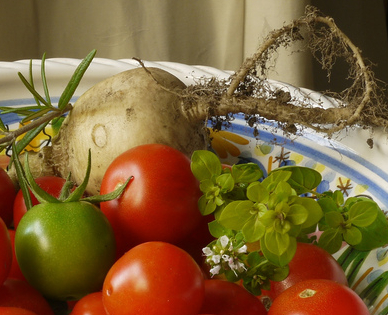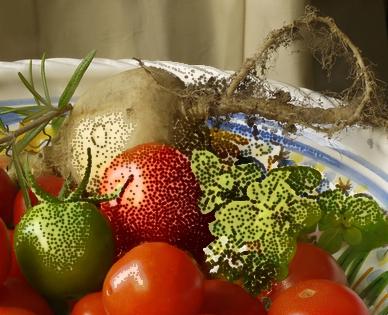From the Lab
Image representation with stipples and other shapes - Conclusion
Bernard Llanos — December 18, 2016 - 4:00pm
This is the final post concerning my undergraduate honours project (course code COMP 4905) for Fall 2016.
It was an interesting project to work on, for several reasons:
- I learned much more about graphical user interface development with the Qt framework.
- I thought deeply about how an image must be altered in order for a viewer to perceive it as "stylized" or "abstracted". For instance, I was inspired by Xiaofeng Mi, Doug DeCarlo, and Matthew Stone's definition of abstraction as a process of selective elimination based on perceptual criteria. They contrast it with smoothing, and with blind suppression of all details that fall beneath a threshold of physical, but not perceptual, importance [1].
- I explored heuristics for finding the essential content perceived in an image - The image's salient areas.
I documented the project in a report submitted to the honours project database (https://service.scs.carleton.ca/node/3067). In my report, I answer many of the questions raised in the initial project proposal. At least, the questions that were still relevant, given that I drifted away from polygon representation of image regions and towards colour smoothing within regions, without lines showing region borders.
I have also posted part of my implementation on GitHub.
I wish to thank Dr. David Mould for supervising my project, providing key insights and ideas along the way. I am also grateful for the supportive environment provided by all members of the Graphics, Imaging, and Games Lab. You shared many interesting ideas at meetings, as well as more concrete things, such as a particularly nice cup of tea.
Below, I provide one of my favourite results, a stylization of the 'tomato' image from the GIGL NPR benchmark, preceded by the source image.


References
- X. Mi, D. DeCarlo, and M. Stone. "Abstraction of 2D Shapes in Terms of Parts," in NPAR Symposium on Non-Photorealistic Animation and Rendering, 2009, pp. 15-24.